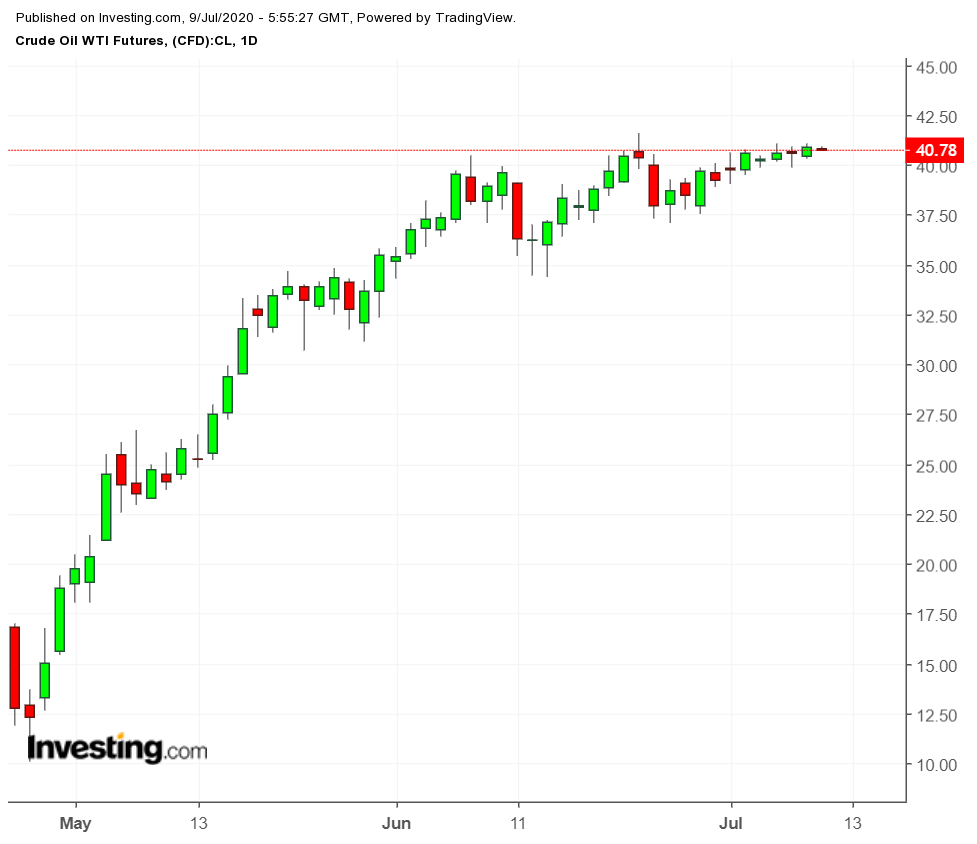There continues to be significant uncertainty in the oil markets as the world recovers from the coronavirus pandemic. It is still unclear how the demand recovery will look or when it may be fully restored.
Production shows signs of increasing in the near future, but there are a few forces holding it back. Refinery and pipeline issues, especially in the U.S., add to the uncertainties.

Here are six issues pulling the price of oil in one direction or the other:
1. Global Oil Demand Growth Disappoints
The EIA now estimates that global oil demand has increased 10 million bpd between April and June as economic lockdowns were eased. This might seem positive, but when considering that global demand plunged by about 30 million bpd, this gain is not monumental, especially since most global jurisdictions are now largely open to busy again.
This instead is evidence against the theory that oil demand would bounce back quickly after the government-imposed economic shutdowns ended. Lockdowns aren’t fully lifted everywhere, but restrictions have been relaxed tremendously.
Fear continues to control consumer behavior and economic contractions caused by the lockdowns continue reverberating through the global economy.
2. Weak U.S. Gasoline Consumption
In the United States, the world’s largest oil consumer, gasoline demand initially showed strong signs of recovery as states started to rollback lockdown measures. Stocks of gasoline fell after economies started reopening. However, those gains appear to be tapering off.
Seasonal gasoline consumption in the U.S. is currently at a twenty-year low and the preliminary data from GasBuddy for July 4th weekend—a time generally marked by high gasoline consumption—is not promising.
3. U.S. Refineries Aren't Operating At Capacity
Refineries in the U.S. continue to operate at only about 77% of their full capacity. While this is a boost from last month, it’s still less than what is typical at this point in the summer.
In July, most refineries run at their maximum capacity to meet gasoline demand. As the season turns towards the autumn, refineries cut their runs or temporarily shut down for maintenance. However, this process is likely to be interrupted or delayed as well, as Marathon Petroleum (NYSE:MPC) already announced that it is delaying scheduled maintenance at its St. Paul, Minnesota refinery—a refinery which has the capacity to process 102,000 bpd, but is currently running at reduced rates due to lower demand for petroleum products.
If refineries don’t do maintenance, they will produce too much product, which the market isn’t prepared to use. This would lead to further expansion in stores of diesel, gasoline, etc.
4. U.S. Crude Production Rebound Yet To Start
Over the past several months, oil production in the United States declined significantly in response to lower oil prices as well as the five in consumption triggered by the global pandemic.
The EIA expects U.S. oil production to reach a low of 10.907 million bpd in July, after which production should start to increase. This could pose a problem if U.S. crude oil exports don’t rise.
Storage capacity is already close to the highest levels ever recorded, and, with refinery utilization lower than normal for this time of year, there is nowhere for that crude oil to go other than exports.
5. OPEC Output Down To 1990 Levels, But Will Rise
According to the June survey of OPEC production from S&P Platts, overall output from OPEC is down to 22.31 million bpd. Even though some OPEC producers haven’t fully complied with their pledged cuts, Saudi Arabia helped compensate for their faults by slashing its output an extra 910,000 bpd in June. Russia’s production fell to 8.5 million bpd.
OPEC production can be expected to climb in July, because Saudi Arabia plans to lift production to meet its 8.49 million bpd quota. We should also anticipate OPEC+ will go ahead with its plan to hike production by 2 million bpd in August, in the hopes that this will be offset, in part, by cuts from member countries that have so far failed to cut.
This seems like optimistic talk from OPEC+. Assuming OPEC+ sees a net increase in production in August, this could cause global inventories to rise. Demand may not be ready yet for more oil on the market in the second half of this summer.
6. Court Ruling Could Curb Oil Production From Bakken
A judge for the U.S. District Court of the District of Columbia ruled this week that the Dakota Access Pipeline, owned by Energy Transfer (NYSE:ET), must cease operations and be emptied of oil by August 5. This could be a major setback for the beleaguered oil industry in the Bakken region because the pipeline carries 557,000 bpd of oil from North Dakota to Illinois.
However, the case is not over yet, and the ruling is likely not the final word on the subject. In fact, Energy Transfer is continuing to accept nominations for oil for the pipeline, because it believes the judge did not have the authority to order the company to halt operations.
The company plans to appeal the decision to the Supreme Court, if necessary. Meanwhile, producers are preparing to ship oil via rail car if the pipeline shuts down. The logistics necessary to shift to rail transportation may prevent a seamless transition and oil production is likely to slow if the pipeline shutdown goes through.
